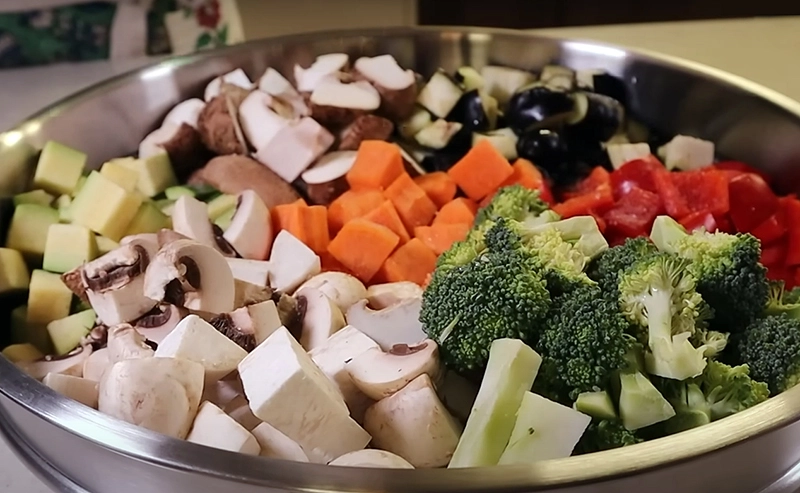If you’re eating vegetables indiscriminately as part of a diet, you may be throwing off the nutritional balance of your mons.
Here’s a list of vegetables that are low in calories and high in vitamins, fiber, protein, calcium, and more.
Tips for eating vegetables for nutritional balance
If you“re on a vegetable-only diet, you”ll have to worry about a lack of protein, as well as fats, calcium, iron, and other nutrients. Vegans are especially concerned about getting enough protein, and kale, spinach, parsley, and other green leaves are important sources of protein.
There is a widespread perception that fats are bad for you, but when consumed properly, they can actually be beneficial to your health and weight loss.
Moderate fat intake limits appetite, regulates hormones, and boosts brain function.
The saturated fatty acids found in animal fats accumulate in the body as waste products and contribute to various diseases, while the unsaturated fatty acids found in avocado and olive oil help to break down fats in the body.
Calcium, which is often lacking in dieters, is an essential nutrient for growing children, the elderly, and women, and is found in kale, broccoli, apples, cucumbers, oranges, oranges, onions, beets, celery, and bananas.
Eating these readily available vegetables and fruits is a great way to get a balanced amount of calcium in your daily diet.
Iron is another nutrient that“s essential if you”re on a diet, but if you consume too much iron from animal sources, toxic substances can cause various diseases.
However, when we absorb iron from plants, we only absorb as much as we need, and any excess is eliminated from the body. Some of the best sources of iron are green vegetables such as kale, romaine, and broccoli, and herbs such as basil, parsley, and oregano.
Recently, a team of researchers from Harvard University in the United States published a list of vegetables that can help you lose weight.
The number one vegetable for weight loss was zucchini. Second place went to beets and third to bell peppers. In addition to containing a variety of nutrients, these vegetables are also known for their ability to prevent skin aging.
1. Korean zucchini

With only 17 calories per 100 grams, zucchini has a mild flavor and can be used in many dishes. Half a zucchini contains 50 percent of the recommended daily value of vitamin C for adults. In addition, the abundance of water and fiber in zucchini helps to stabilize blood sugar levels, reducing the risk of diabetes. Best of all, they“re low in calories, but like potatoes and sweet potatoes, they”re very filling, making them a great option for a diet meal.
2. Apples
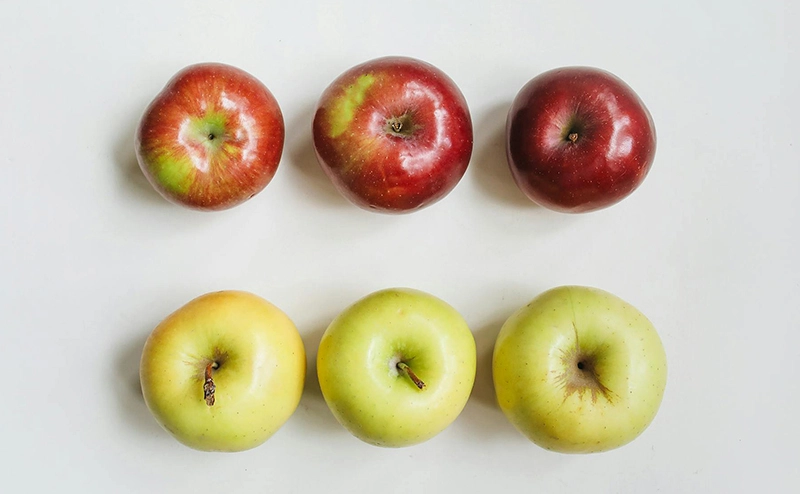
Quercetin, a phytochemical found in apples, has antioxidant and antimicrobial properties that help keep blood vessels and the brain healthy, while beta-carotene prevents cell damage caused by free radicals, delaying aging. It also inhibits allergic reactions and inflammation and prevents skin cancer.
The pectin contained in apples improves constipation and removes cholesterol from the body. It”s best to eat apples with the skin on, as it contains the most pectin and quercetin.
3. Chickpeas

Iron and folic acid prevent anemia and make the brain healthy. The phytochemicals isoflavones help regulate cholesterol, prevent breast cancer, and relieve menopausal symptoms. Chickpeas can be soaked and added to rice or boiled and added to salads to increase protein intake and increase satiety.
However, their high fiber content can cause bloating if you eat too many at once.
4. Broccoli
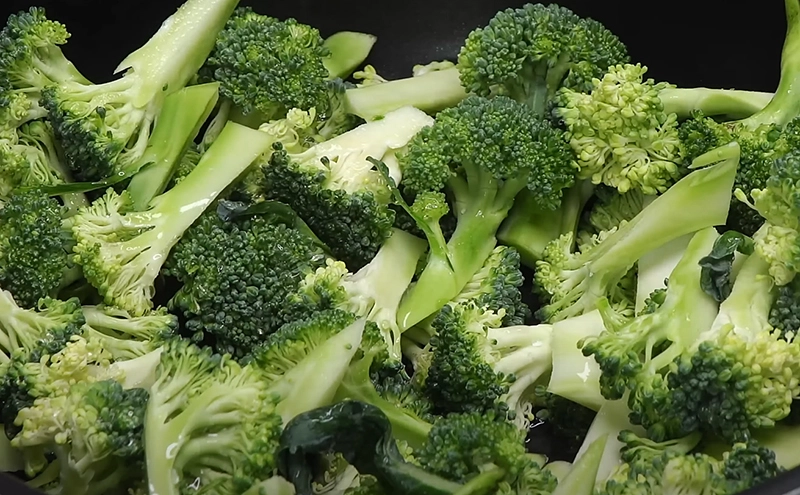
The phytochemical beta-carotene prevents cellular damage caused by free radicals, which delays aging and prevents cancer and adult diseases. Its high calcium content prevents bone density loss, which prevents bone and tooth damage. In addition, the phytochemical kaempferol inhibits platelet aggregation and prevents arteriosclerosis.
Boiling broccoli in boiling water destroys the vitamin C folate and some anti-cancer compounds, so steam or microwave it for a short time. Beta-carotene is fat-soluble, so sautéing it in oil or eating it with an oil dressing increases its absorption.
5. Avocados

Rich in unsaturated fats, avocados lower triglycerides and improve blood circulation. They are also rich in lutein, which improves eye fatigue and vision and prevents eye diseases such as cataracts and macular degeneration.
The vitamin E it contains protects cells from free radicals and delays aging. Its polyphenols have anti-inflammatory, anti-cancer, and antiviral properties that help boost the immune system. Avocados can be used in salads, smoothies, and as they change color easily, so it”s best to eat them as soon as possible after peeling them.
6. Beets

Beets, with their striking red color, have phytochemicals called anthocyanins, which help to scavenge free radicals and improve the production of red blood cells.
The vitamin C in beets helps eliminate toxins from the body, boosts the immune system, and prevents skin aging. They are also rich in folic acid, which reduces homocysteine levels, a toxic substance that causes brain and vascular disease, preventing stroke and atherosclerosis.
7. Asparagus
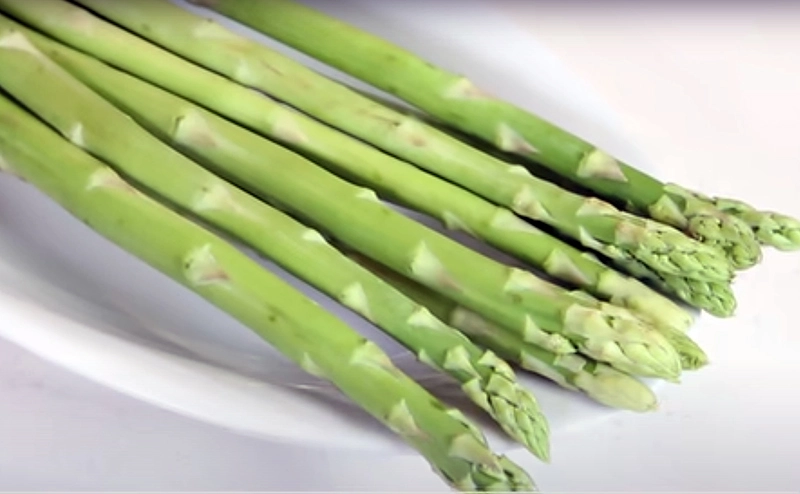
Asparaginic acid, a type of amino acid, boosts the body’s metabolism and eliminates fatigue. It helps to synthesize proteins, which helps to fight fatigue and improve stamina. It also promotes diuresis, which helps to eliminate waste from the body. In addition, vitamin E protects cells from free radicals and delays aging. It”s also full of fiber, which helps to move the intestines, improving constipation and lowering blood cholesterol and blood sugar levels to prevent chronic diseases. Sautéing asparagus over high heat for a short time will help it retain its crunchy texture.
8. Green beans

The vitamin C in green beans, also known as gribins, eliminates toxins from the body, strengthens the immune system, and prevents skin aging. The phytochemical lignan regulates female hormonal imbalances and prevents breast cancer. They can be blanched in boiling water or pan-fried and cooked in a variety of ways, such as salads, stir-fries, braises, and dips.
9. Matsutake mushrooms

Mushrooms are a high-protein food, containing similar levels of protein to milk. They contain digestive enzymes such as trypsin and amylase, which aid in digestion. In addition, they“re rich in vitamin D and dietary fiber, which can help lower blood cholesterol and blood sugar levels, preventing chronic diseases. For this reason, they”re a great accompaniment to meat.
10. Napa cabbage
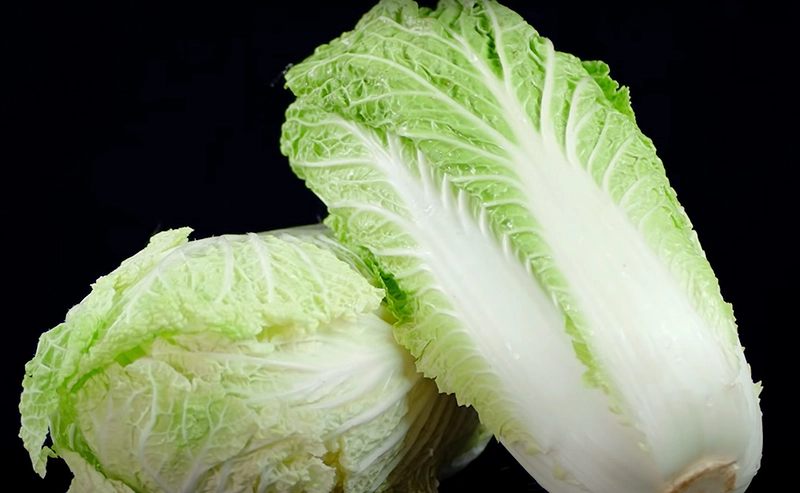
A typical leafy vegetable, napa cabbage is high in vitamin C, which boosts the immune system and helps prevent colds. It”s also rich in potassium, which helps to reduce swelling and prevent high blood pressure.
Although it is low in calories, it is rich in fiber, which promotes intestinal activity, so it can help relieve constipation and help you lose weight. Its flavor is mild and light, so it“s easy to eat, and it”s a vegetable that doesn“t weigh down your stomach when you have a hangover or don”t have an appetite.

